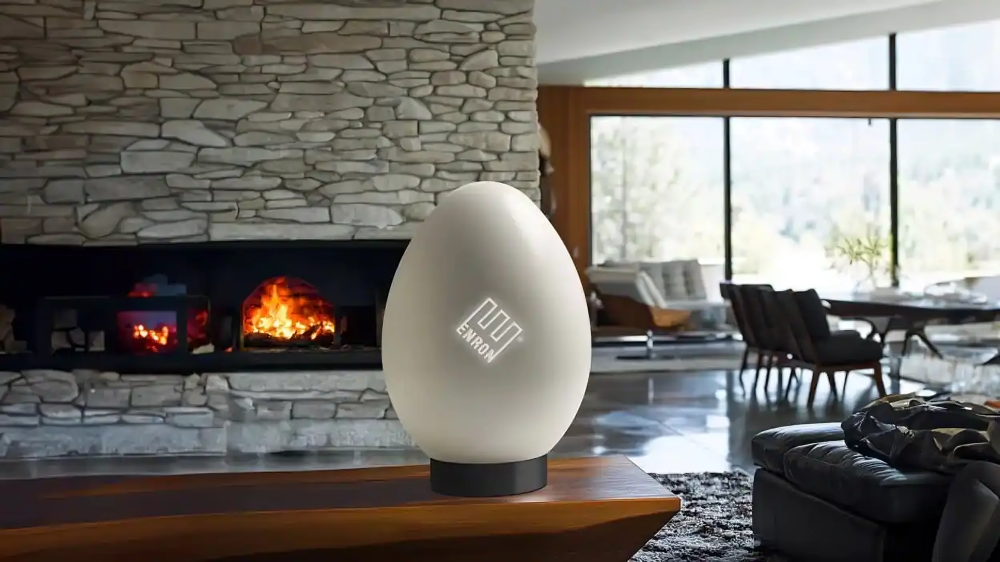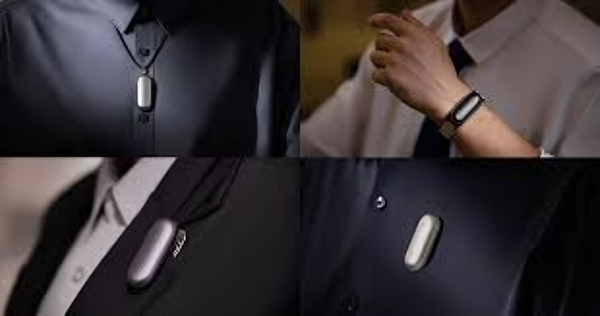The Enron Egg, the world’s first micro-nuclear reactor made to power your home

Imagine flipping a switch in your home, powered not by solar panels or a utility grid, but by a sleek, egg-shaped micro-nuclear reactor sitting in your basement. In January 2025, this vision captivated the internet with the announcement of the “Enron Egg,” billed as the world’s first home nuclear reactor, capable of delivering clean energy for a decade. Social media buzzed with excitement and skepticism, but the truth soon emerged: the Enron Egg is a fiction, a brilliantly crafted parody designed to provoke thought and expose the dangers of misinformation. Let’s crack open this story, explore its origins, and uncover what it reveals about energy innovation and the power of satire in today’s digital age.
The Enron Egg Unveiled: A Bold Claim
On January 7, 2025, a website sporting the familiar Enron logo launched with a splashy announcement: the Enron Egg, a compact micro-nuclear reactor designed to power homes (Enron Corporation). The promotional video, featuring Connor Gaydos as the “CEO” of a revived Enron, channeled the charisma of a tech mogul unveiling a game-changer. The Egg, it claimed, uses Uranium-Zirconium Hydride (U-ZrH) fuel rods to generate heat through nuclear fission, transferred via a 3D-printed Inconel heat exchanger to power a turbine. A closed-loop cooling system ensured safety, while advanced shielding and fail-safe mechanisms protected against radiation risks.
The website’s polish was striking, detailing features like a heat-resistant casing made of the fictional “enronium isotope” and a “little TV” for remote monitoring by the Enron team (The Independent). It even invited users to pre-order by submitting their email for a newsletter. Social media amplified the hype, with an X post exclaiming, “Enron just introduced the ‘Enron Egg’ - the world’s first micro-nuclear reactor for residential use!” (Reuters). But as curiosity grew, so did suspicion. Could a company synonymous with scandal really deliver such a breakthrough?
Enron’s Shadow: A History of Infamy
To understand the Enron Egg, we must revisit Enron Corporation’s legacy. Founded in 1985, Enron rose to become a global leader in energy and commodities trading, celebrated for its innovation. But in 2001, its empire crumbled when massive accounting fraud was exposed, revealing fabricated profits and deceptive practices. The collapse led to one of the largest bankruptcies in U.S. history, costing 20,000 employees their jobs and pensions (City Cast Houston). Enron became a cautionary tale of corporate greed, its name etched in infamy.
In 2020, Connor Gaydos, a performance artist and entrepreneur, purchased the Enron trademark for just $275 (Yahoo). Gaydos, known for co-creating the satirical “Birds Aren’t Real” conspiracy theory with Peter McIndoe, saw an opportunity to revive the brand for a new purpose: satire. In December 2024, he launched a parody Enron Corporation, complete with a website and a mission to “solve the global energy crisis” (The New York Times). The Enron Egg was its first “product,” a fictional innovation designed to spark debate and amusement.
The Parody Revealed: A Satirical Masterpiece
The Enron Egg is not a real micro-nuclear reactor—it’s a hoax, a piece of performance art crafted to entertain and provoke (Forbes). The Enron website clearly states that all content is “first amendment protected parody” for entertainment purposes only (Reuters). Despite its convincing presentation, experts like Derek Haas, a nuclear engineering researcher at the University of Texas, have debunked its feasibility, stating, “With our current understanding of physics, this will never be possible” (City Cast Houston).
The parody’s brilliance lies in its attention to detail. The launch video mimics tech industry keynotes, with Gaydos delivering lines like, “This product is gonna revolutionize the power industry, the independence industry, and the freedom industry” (Daily Mail). The website’s technical jargon, from “boron control drums” to “lead-polyethylene-boron shielding,” adds a veneer of authenticity, while absurdities like the “enronium isotope” hint at its fictional nature (Yahoo). The campaign fooled some social media users, underscoring how easily misinformation can spread when packaged professionally.
Micro-Nuclear Reactors: Reality vs. Fiction
While the Enron Egg is a parody, it taps into real curiosity about micro-nuclear reactors. Nuclear power is traditionally associated with large plants that supply electricity to cities, but research into small modular reactors (SMRs) and microreactors is advancing. Companies like NuScale Power are developing SMRs for applications like remote communities or industrial sites, with designs that are safer and more efficient than traditional reactors (City Cast Houston). However, these are still far larger than a home unit, requiring extensive infrastructure and regulatory oversight.
The idea of a nuclear reactor small enough for residential use, like the Enron Egg, is currently infeasible. Key challenges include:
- Safety: Managing radiation and preventing accidents in a home setting is nearly impossible with current technology.
- Regulation: Nuclear reactors face stringent oversight, making home deployment impractical.
- Waste Management: Disposing of nuclear waste safely is a significant hurdle.
- Cost: Developing and maintaining such a device would be prohibitively expensive.
Experts agree that decentralized energy solutions, like solar panels or battery storage, are more practical for homes (Mashable). While nuclear innovation continues, the Enron Egg’s claims remain firmly in the realm of science fiction.
Aspect | Enron Egg (Parody) | Real Micro-Nuclear Reactors |
|---|---|---|
Purpose | Satirical performance art to mock misinformation | Power generation for small-scale applications |
Technology | Fictional, uses “enronium isotope” and U-ZrH fuel | SMRs use real nuclear fission, but not for homes |
Feasibility | Scientifically impossible | In development, but not for residential use |
Safety | Claims fail-safe mechanisms (fictional) | Requires extensive regulatory oversight |
Status | Parody launched January 2025 | Prototypes in testing, commercial use years away |
The Power of Satire: Why the Enron Egg Matters
Why create such an elaborate hoax? Gaydos and his team, known for “Birds Aren’t Real,” use satire to engage audiences and critique societal trends (The New York Times). The Enron Egg highlights the public’s susceptibility to bold claims, especially when tied to a familiar brand like Enron, despite its tainted history. By blending technical jargon with absurdity, the parody encourages viewers to question what they read and see, fostering critical thinking in an era of rampant misinformation.
The campaign also taps into fascination with nuclear energy, often viewed as both a solution to climate change and a source of fear due to its risks. By presenting a fictional product that seems almost plausible, Gaydos sparks curiosity about real energy innovations while exposing the dangers of unchecked hype. As one X post noted, “The Enron Egg had me for a second, but it’s a reminder to always check the source!” (Reuters).
Conclusion: A Lesson in Skepticism
The Enron Egg is not a real micro-nuclear reactor, but its impact is undeniable. As a satirical masterpiece, it challenges us to look beyond flashy presentations and verify claims with credible sources. While the dream of home nuclear power remains distant, the Enron Egg sparks valuable conversations about energy innovation and the role of satire in combating misinformation.
For anyone intrigued by the future of energy, the Enron Egg is a reminder to stay curious but cautious. Real breakthroughs are out there, but they won’t come wrapped in the shell of a disgraced brand like Enron. So, the next time you hear about a game-changing gadget, take a moment to crack it open—you might just find a yolk instead of a revolution.



